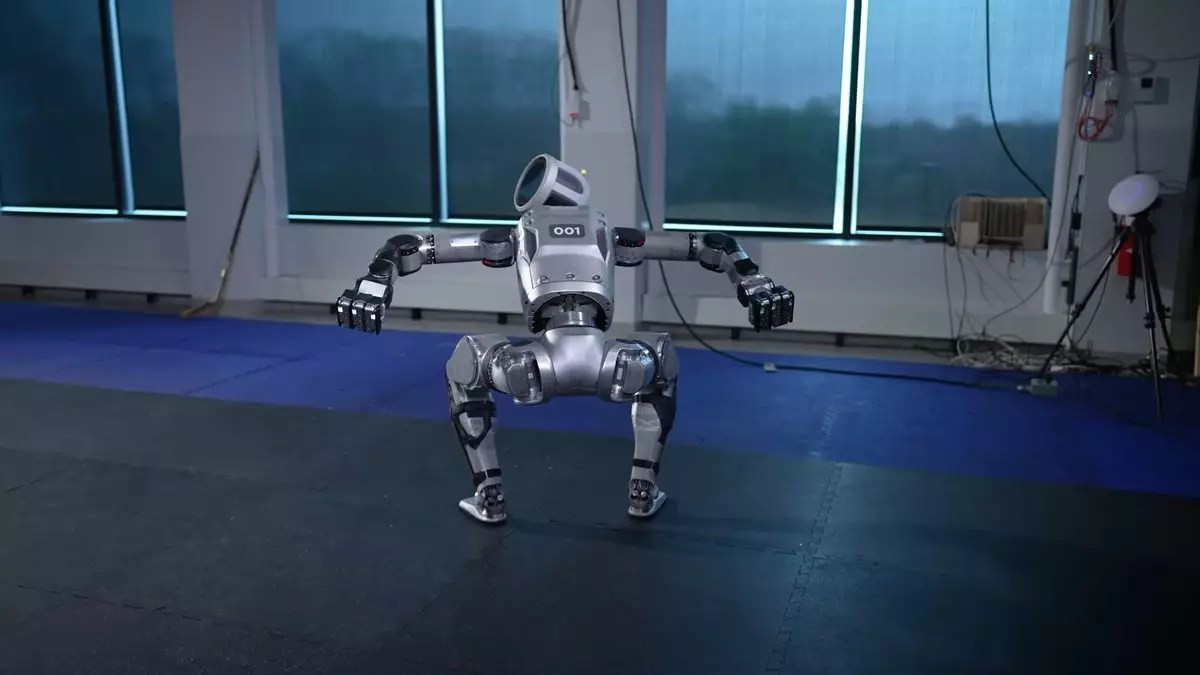Humanity’s relationship with technology has always been a complex one, with advancements in robotics constantly pushing the boundaries of what we once thought was possible. Boston Dynamics, a leader in the field of robotics, recently bid farewell to its original Atlas robot, marking the end of an era. This iconic humanoid machine, standing tall at 6 feet two inches and weighing 330 pounds, captured our imagination with its parkour skills and friendly demeanor. However, the time has come for Atlas to pass the torch to its successor.
The Rise of Atlas 2.0
Boston Dynamics has unveiled the next generation of Atlas, featuring a sleek design and electric joint motors that allow for greater flexibility and movement capabilities. This new iteration boasts “Athletic Intelligence” that enables it to adapt to various environments on the fly, as well as advanced perception features for real-time awareness of its surroundings. The introduction of these cutting-edge technologies signifies a major leap forward in the world of robotics, positioning Atlas as a versatile and adaptable humanoid robot.
While the advancements made in the new Atlas are undeniably impressive, there is a lingering sense of unease when watching the robot in action. The video showcasing Atlas 2.0 moving in ways reminiscent of a horror movie monster raises questions about the fine line between innovation and intimidation. Boston Dynamics’ deliberate choice to highlight the slightly unsettling aspects of the new robot speaks to their strategic approach in generating interest and intrigue within the industry.
As we marvel at the technological prowess of robots like Atlas, it is essential to remember the human element involved in their creation and evolution. The engineers and researchers behind these groundbreaking machines pour countless hours of dedication and ingenuity into pushing the boundaries of what is possible. While Atlas may appear daunting at first glance, it is a testament to the incredible feats that can be achieved through human ingenuity and collaboration with technology.
As Boston Dynamics continues to push the boundaries of robotics with innovations like Atlas 2.0, we are reminded of the ever-evolving nature of technology and its impact on society. The potential applications of humanoid robots in various industries, from manufacturing to healthcare, are vast and promising. While the future may hold uncertainties about the role of robots in our lives, one thing remains clear – the partnership between humans and technology will continue to shape the world we live in.
The unveiling of Atlas 2.0 represents a significant milestone in the field of robotics. With its advanced capabilities and sleek design, this new iteration of the iconic humanoid robot paves the way for a future where human-robot interaction takes center stage. As we navigate the complexities of this technological landscape, it is crucial to approach these advancements with a critical eye and an open mind. The future of robotics is unfolding before our eyes, and it is up to us to embrace the possibilities it presents.


Leave a Reply